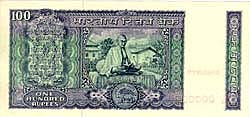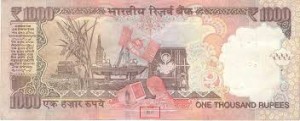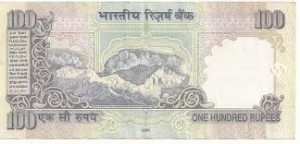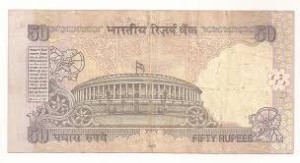Currency is a generally accepted form of money, including coins and bank notes circulated within an economy which are used as a medium of exchange for goods and services. The Indian currency is called the Indian Rupee. It is the legal tender in India.
Let’s see some facts about Indian Rupee.
Annals of Indian Rupee
- British India: Paper Currency: British India Issues commence with the Paper Currency Act of 1861 which gave the Government the monopoly of note issue in India. Initially the Presidency Banks were appointed as agents to promote the circulation of these notes in view of their existing infrastructure. The Act of 1861 authorised the Presidency Banks to enter into agreements with the Secretary of State for becoming agents for the issue, payment and exchange of promissory notes of the Government of India, these banks were terminated in 1867 and the management of currency was taken over by the government. The series of the paper currency was the victoria series, King George V and king George VI.
- RBI: The Reserve Bank of India was formally inaugurated on April 1, 1935 with the currency issuing and regulating authority. Section 22 of the RBI Act, 1934, empowered it to continue issuing Government of India notes till its own notes were ready for issue.
RBI issued its first notes in 1938 signed signed by the second Governor, Sir James Taylor of denominations 5, 10, 100, 500,1000, 5000,10000. All these notes were demonetized in 1946.
When RBI was ready with the new designs,Government of India brought out the new design Re 1 note in 1949. High denomination notes (Rs 1,000, Rs. 5,000, Rs. 10,000) were reintroduced in 1954. India adopted a decimal monetary system in 1957, when One Rupee was deemed to consist of 100 Paise (singular Paisa) called decimalization.
In 1969 a commemorative design series in honour of the birth centenary celebrations of Mahatma Gandhi was issued for the first time depicting a seated Gandhi with the Sevagram Ashram as the backdrop. High denomination notes were once again demonetised in 1978.
- Mahatma Gandhi Series: The 1980s saw a completely new set of notes issued. The Mahatma Gandhi series started with The Rupee 500 note introduced in October 1987 with the portrait of Mahatma Gandhi. The water mark continued to be the Lion Capital, Ashoka Pillar. This series got completed in 1996 with all notes under this series except Rs. 2 note. The current notes follow mahatma Gandhi series.

- Present Issue: The management of note issue is the responsibility of the Reserve Bank of India which is the central bank of the country, signed by the governor. RBI issues notes in the denominations of Rs.5, Rs.10, Rs.20, Rs.50, Rs.100, Rs.500 and Rs.1000 however it can issue a currency note up to denomination of 10000. Rs 1 note is printed by the government of India. The printing of notes in the denominations of Re.1 and Rs.2 has been discontinued as these denominations have been coinised. However, such notes issued earlier are still in circulation. Responsibility for matters pertaining to coinage vest with the Government of India. Coins in India were issued in denominations of 10 paise, 25 paise, 50 paise, one rupee, two rupees and five rupees. Coins upto 50 paise are called ‘small coins’ and coins of Rupee one and above are called ‘Rupee Coins’. Since 25 paise coin is the latest demonetization w.e.f 30 June 2011, so coins of 50 paise and above only are in circulation in the country. There are 4422 currency chest branches and 3784 small coin depots spread throughout the country. The currency chests and small coin depots distribute coins to the public, customers and other bank branches in their area of operation.
Modern Currency
- Rs 1000 note: It was reissued in 2000. It depicts modern India.

- Rs 500 note: It was reissued in 1987. It shows Dandi yatra (11 moorti).

- Rs 100 note: IT depicts Himalayan range (non-living ecology).



- Rs 50 note: It depicts sansad bhavan (democratic India).

- Rs 20 note: It depicts palm trees (living ecology).

- Rs 10 note: It depicts wildlife.

- Rs 5 note: It depicts agriculture (green revolution).

Currency Printing Press
- SPMCIL: Security Printing and Minting Corporation of India Limited- at Nasik and Devas
- BRBNMPL: Bhartiya Reseve Bank Note Mudran Private Limited- at Mysore and Salboni(West Bengal)
Download as PDF
Read next article: International Monetary Fund (IMF) ››
Read previous article: « Basic Savings Bank Deposit Accounts (BSBDA)
« Back to banking material page